German Jews who immigrated to Israel in the early twentieth century made a huge contribution to the Israeli culture. Yet too often they were deprived of the appreciation they so highly deserved. This may have been a result of them lacking the Zionist zeal of East European Jewry, or maybe their adherence to the European intellectual spirit made them a bit alien in the Israeli society that was forming, driven by the anti-intellectual image of ‘The New Jew’.
Ruth Schloss (1922-2013), an Israeli painter and illustrator, was born in Nuremberg to a fully assimilated Jewish family. Her parents, wealthy paper merchants, raised her in a progressive, liberal ambiance, with an enhanced social awareness. Her father, though himself an employer, used to march on International Workers’ Day carrying a red flag. Her mother established a liberal nursery school, where her daughters were among her students; she covered the walls with papers and encouraged the children to draw on them as much as they wished!
Only at the age of eleven did Ruth discover that she was Jewish. In 1933, rising anti Semitism and the Nazi takeover of the government made her parents realize they could never be part of the German society they so dearly cherished. The family decided to immigrate to Palestine. First went the father, then the mother and the daughters. When Ruth arrived in Palestine, she didn’t speak a word of Hebrew, and had only a vague idea of both Judaism and Zionism. The father decided to abandon his former profession and become a farmer. They settled in Kfar Shmariahu, then an agricultural farm, now one of the wealthiest neighborhoods in Israel; they did rather well in their new occupation.
Already as a child Ruth was inclined to the arts, determined to become an artist. But in Palestine, without any Hebrew, she made a most unusual choice: instead of going to high school she applied to Bezalel, an art college where classes were given in German, as the teachers themselves were recent immigrants to Palestine. She was admitted at the age of fifteen. All by herself she moved to Jerusalem, renting a tiny room, steeping herself in the study of art. At the age of nineteen she graduated with honors.
After her graduation Ruth joined a kibbutz, a collective community. Though she had grown up in a capitalistic environment, her parents’ pronounced social sensitivity made the move to a socialist society natural, almost expected. She fully adopted the ideal of the kibbutz – complete equality between members in all respects – feeling that this was the only way to provide for the weak, the deprived, the unprivileged.
At a certain point in Israeli history, segments of the socialist movement felt that Israel should become part of the Communist bloc, rather than seek the support of the western world. This was not only a practical political issue but a disagreement on the future nature of Israeli society. Ruth and her husband, the historian Benjamin Cohen, were fierce supporters of the Soviet Union. In a bipolar world of western countries vs Communism, expressing a decisive ambition to be part of the Soviet Union led to their expulsion from the Kibbutz. They moved to the center of Israel, and joined the Communist party, whose members were both Jewish and Israeli Arabs. The couple lived in Kfar Shmariahu, where they raised their two daughters.
In contemporary eyes this adherence to extreme socialist ideas may appear odd, even hypocritical. But Ruth’s sketches and paintings reveal where her dedication to social justice was coming from. Almost all her works depict old people, cripples, refugees, exhausted mothers, neglected children, – even animals in pain. Her compassionate nature made her see, perhaps in a distorted manner, the weaker members of society. To make a living she illustrated children’s books. She often complained that this called for a naïve, light depiction of reality, whereas her natural inclination was to describe the darker aspect of human existence.
Not only her German background and political stands deprived her of her worthy place in Israeli art. Mostly it was her unique artistic style that made art critics devaluate her work. Her figurative style and focus on human suffering was contrasted with the prevailing artistic inclination to abstract art. Yet she found abstract painting limited, unsatisfying, confessing that she could not truly express herself without a focus on a concrete subject. It never occurred to her that she could adapt her art to the modern, contemporary style. Her motivation, both moral and artistic, was to provide a realistic presentation of segments of our life we normally don’t like to see.
Ruth Schloss never had an exhibition in the major Israeli museums. Her works were presented in private galleries and small museums. Sadly, her paintings and sketches are now auctioned. It is my humble opinion that her art is worthy of an exhibition in the best art institutes in Israel.
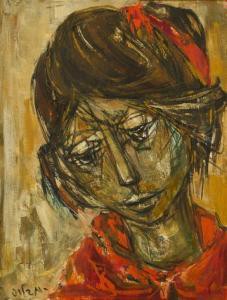
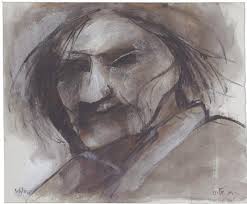

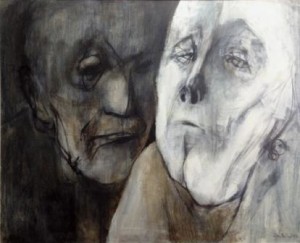
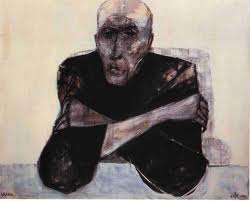
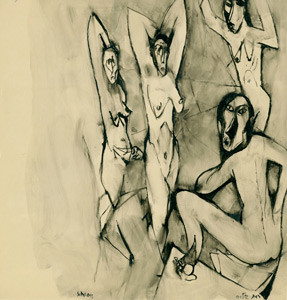

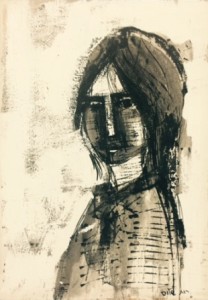
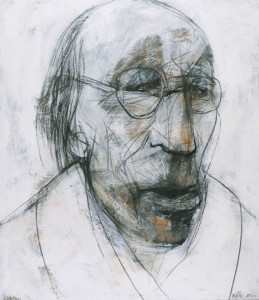
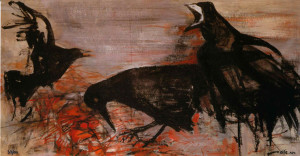
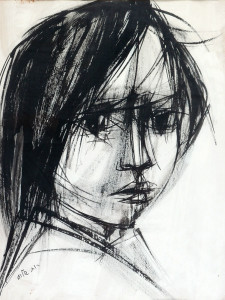
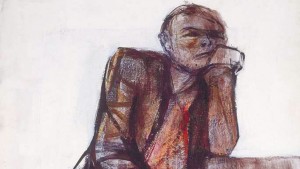
She is a remarkable artist, yet not given the appreciation she deserves.
Just found an original piece of hers in a thrift shop and it’s absolutely stunning.
Thanks!
Very interesting article. Thank you
Thanks. She was a special person in many ways. I feel her modesty made others look down at her. In my view she was an excellent artist, worthy of a permanent exhibition in either Tel Aviv Museum or the Israel Museum in Jerusalem.
Looking at her art evokes many feelings. I enjoy more realistic art but I enjoyed viewing her works. Her story is fascinating and the idea of a Communist Israel new to me. I am a Socialist. Her motivations arecalso mine. Thank you for sharing.
i’m looking at the artist paintings, drawings, and i noticed this is fascinating, the resting camel has a stunning similarity to a mouse or rat, i have noticed this family linkage in humans and animals, many mammals all sharing a commonality a visual likeness, just as humans do. my hope is that more will see themselves in the faces of others, the common human family we share, as only by realizing that we are a family can we overcome one division brought upon us, racism. the true profound artist is a person who has a divine link here, i think it’s difficult for them to be connected that way, and some get it, or understand and that can be a frustration in itself, and i also think some may not understand it proper, because we being in a darkened times. i believe much comes against certain people, who see things in a different way than others, the others being the majority of the population, and it’s often a pain to be that way here, while some are able to manage it much better than others, which brings on a mountain of questions.